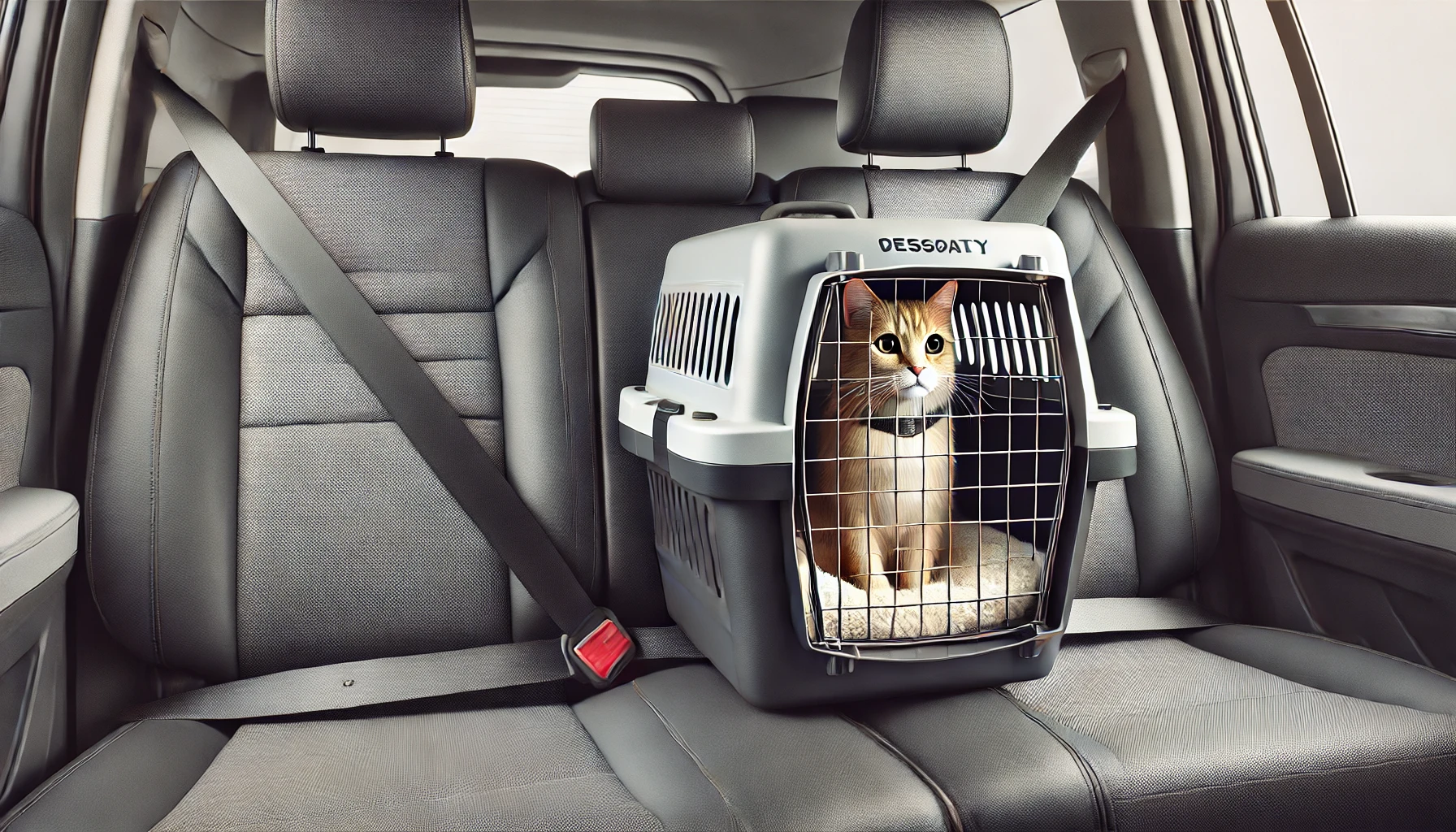Walking your cat on a leash allows them to safely explore the outdoors, get mental stimulation, and stay active. However, unlike dogs, cats need gradual training to feel comfortable wearing a harness and walking outside.
In this guide, you’ll learn how to choose the best harness, get your cat comfortable, and train them step by step for outdoor adventures.
1. Choose the Right Harness and Leash
A proper harness keeps your cat secure and comfortable while preventing escape.
✅ Best Features for a Cat Harness:
✔ Adjustable straps – Ensures a snug fit.
✔ Escape-proof design – Secure, but not too tight.
✔ Breathable material – Mesh or soft fabric for comfort.
🚨 Avoid collars for leash walking! Cats can easily slip out and injure themselves.
2. Get Your Cat Used to the Harness Indoors
Before going outside, your cat must feel comfortable wearing the harness.
✅ How to Introduce the Harness:
✔ Let your cat sniff and inspect it.
✔ Place it near their bed or food bowl to create a positive association.
✔ Gently put it on for a few minutes at a time.
✔ Reward with treats and praise after each session.
🚨 Common Mistake: Rushing the process.
Instead: Allow your cat to adjust slowly over days or weeks.
3. Attach the Leash Indoors First
Before heading outside, let your cat get used to the feeling of a leash indoors.
✅ Leash Training Indoors:
✔ Clip the leash onto the harness and let them drag it around.
✔ Hold the leash gently and walk with them inside.
✔ Reward calm behavior with treats.
🚨 If your cat freezes or flops over, remove the leash and try again later.
4. Choose a Quiet, Safe Outdoor Space
The first outdoor experience should be calm and controlled.
✅ Best Places for First Walks:
✔ A quiet backyard or patio.
✔ A secure enclosed garden.
✔ A quiet park with no dogs or loud noises.
🚨 Avoid high-traffic areas, busy streets, or dog parks at first!
5. Let Your Cat Explore at Their Own Pace
Unlike dogs, cats won’t immediately walk on command—they prefer to explore slowly.
✅ How to Encourage Outdoor Exploration:
✔ Let them sniff and observe their surroundings.
✔ Use a calm voice and gentle encouragement.
✔ Keep sessions short (5–10 minutes at first).
🚨 Never pull the leash! Let your cat lead the way and explore naturally.
6. Watch for Body Language and Signs of Stress
A cat’s body language tells you if they feel safe or anxious.
✅ Signs Your Cat is Comfortable:
🐾 Tail up and ears forward.
🐾 Sniffing, exploring, and walking naturally.
🐾 Relaxed body posture.
🚨 Signs Your Cat is Stressed:
❌ Tail tucked or body low to the ground.
❌ Hissing, growling, or flattened ears.
❌ Trying to run away or escape.
🚨 If your cat seems scared, take them back inside and try again later.
7. Keep Outdoor Walks Short and Positive
Cats can get overstimulated quickly, so keep the first few walks brief and positive.
✅ Best Walk Duration:
✔ 5–10 minutes at first.
✔ Slowly increase time as they get comfortable.
✔ Always end on a positive note (with treats or pets).
🚨 Never force your cat to stay outside if they seem uncomfortable.
8. Use a Lightweight, Retractable Leash for More Freedom
Once your cat is comfortable walking, a retractable leash allows more exploration.
✅ Benefits of a Retractable Leash:
✔ Gives your cat more range to explore safely.
✔ Helps them feel independent while staying secure.
✔ Allows gradual control if needed.
🚨 Common Mistake: Letting the leash stay too tight.
Instead: Keep it loose so your cat can explore freely.
9. Avoid Unsafe Outdoor Situations
Not all outdoor environments are cat-friendly.
❌ Places to Avoid:
🚫 Areas with loose dogs or aggressive animals.
🚫 Busy streets with loud traffic.
🚫 Heavily wooded areas with potential predators.
🚨 If anything startles your cat, calmly pick them up and return inside.
10. Be Patient—Every Cat Learns at Their Own Pace
Some cats love walking outside, while others prefer to stay indoors.
🐾 Signs Your Cat Enjoys Walks:
✅ Eagerly walks to the door when they see the harness.
✅ Explores confidently and stays relaxed.
✅ Walks without hesitation.
🐾 Signs Your Cat Prefers Indoors:
❌ Hides when they see the harness.
❌ Freezes or panics outside.
❌ Tries to escape or refuses to walk.
🚨 If your cat doesn’t enjoy walks, respect their preference and find other ways to stimulate them indoors.
Final Thoughts
Leash training a cat takes time and patience, but it can be a fun and enriching experience if done correctly!
🐱 Key Takeaways:
✅ Use a secure, adjustable harness (no collars!).
✅ Get your cat comfortable indoors first.
✅ Let them explore at their own pace—no pulling.
✅ Choose quiet, safe locations for outdoor time.
✅ Keep walks short and positive.
✅ Watch for stress signs and stop if needed.
✅ If your cat doesn’t enjoy walks, respect their choice.
With consistent training and encouragement, your cat may learn to love their outdoor adventures! 🐾💖





